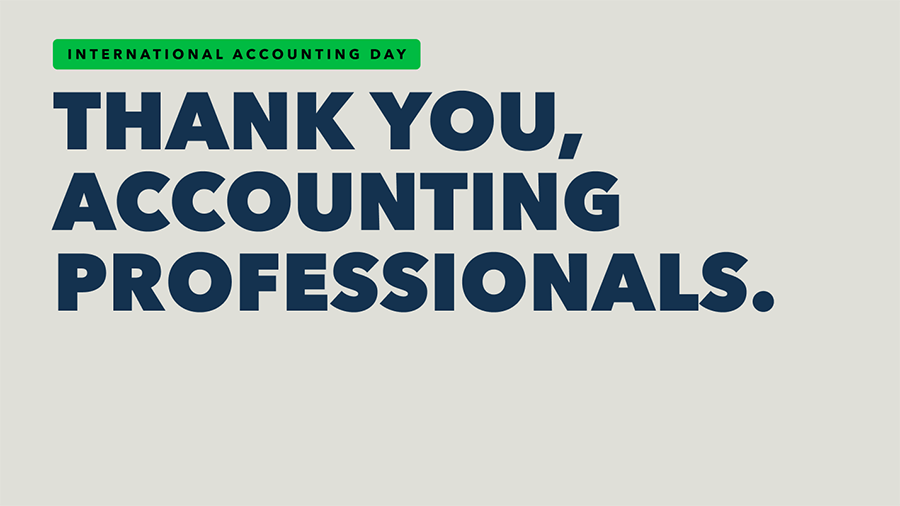Prime Minister Anthony Albanese has recently pledged to “make gender pay equity an objective of the Fair Work Act”. This follows a report published by the Australian Bureau of Statistics which stated that the gender pay gap between Australian men and women has dropped to 13.3%.

Head of Accounting at Intuit sheds light on the gender pay gap in the industry
What Does The Gender Pay Gap Data Show?
In November 2022, the average weekly full-time wages for women in all occupations and industries stood at $1,653.60. In comparison, the typical full-time weekly base salary for Australian men was $1,907.10.
This means that the gender pay gap has decreased by $2,000 on average with the average Australian female in the accounting profession earning $48,000 less than the average Australian male.
In the accounting industry more specifically, data from the 2022 Chartered Accountants Australia and New Zealand Remuneration Report has shown that a full-time CA, on average, makes $150,000 annually including bonuses. Excluding bonuses, the average is $130,000.
“But what we do know – and this is consistent with last year – CAs don't hit that average salary until they are about 15 years into their tenure as an accountant. As a CA, that's a really long time to sit around and wait for your average remuneration,” says Shaye Thyer, Head of Accounting at Intuit, on the Reality Cheque podcast.
According to the CA ANZ report, the overall median pay for accountants increased by 11% in New Zealand and Australia. In 2022, 7,700 Chartered Accountants (CA) participated – a 70% increase from last year. The respective male and female respondents were the same percentage, closely reflecting the membership demographic.
The CA ANZ remuneration survey confirms a prior year's conclusion that men and women still have different opinions about how serious the gender pay gap is.
Expanding on what was mentioned earlier, 70% of surveyed women believe there is a gender pay gap. However, most males (also 70%) are sceptical.
This suggests that more needs to be done by companies and professionals to educate people about the gender pay gap in accounting (and its effects).
Employers Should Consider More Than Pay
Accelerating change toward workplace gender equality depends heavily on employer involvement. If Australia is to enhance workplace gender equality, more workplaces should recognise their gender pay gaps, measure them, and then set goals for taking the necessary steps to close them.
“At Intuit, we conduct a pay gap audit on an annual and global basis. Any gaps identified are immediately closed. This interrogates both gender bias and biases impacting minority groups. So, for every $1 a man earns working at Intuit, a woman working at Intuit also earns on average $1. Every organisation should audit, measure and correct – over and over again. This is how we make real progress.” Thyer says.
WGEA scorecard for 2022 reported that 54% of employers considered the gender pay gap. But 40% of them did nothing.
“Although the 11% increase in overall median pay for accountants doesn't necessarily line up with the CA ANZ report because last year's included full-timers and part-timers, it does resonate with what I am seeing in my practice and hearing out there,” says Rebecca Mihalic, Head of Accounting at Ignition.
“This is definitely noticeable for those at junior levels and people entering the profession. We really need to get paid more because we were already underpaid for the good work we do as an industry,” says Mihalic on the Reality Cheque podcast.
CA ANZ states this 11% growth confirms that a career in the profession remains an attractive proposition during a skills shortage, which has increased competition for talent.
Mihalic argues that the increase in competition for talent is not because the industry is attractive or remains attractive. “I think it's because we desperately need to pay people to stay. We have the lowest number of grads coming through year after year. That number is dropping, and the fight for talent is increasing.”
“So, I don't think that the data is making our industry more attractive to stay in. I think it's just employers acting out of desperation,” she says.
Differences in Career Break Motivations
The survey discovered a clear difference between men's and women's motivations for taking time off from work. Compared to 52% of women, only 21% of males reported taking a career break.
Only 18% of the men in the survey mentioned parental leave as the reason they took a career break.
The WGEA 2022 employer census further showed that companies were less likely to establish plans to raise the percentage of males taking parental leave or in female-dominated industries.
While troubling, Mihalic is optimistic about the future.
“If it makes you feel any better, though, I am witnessing a forced change at the more junior levels in our organisation where I'm watching these men and women have families. And I'm sure it's not everywhere, but we have that ability, particularly here, for them to take the time that they need,” she says.
“So, I love being able to see men lean into parental leave if they need to or do the running around for their families or spend time with their kids when they need to, just as much as the women can. And I think that will become very important moving forward for the next generation of people who come through our firms because family issues are more focused.”
Closing the Gender Pay Gap
“Clearly we can see that 51% of respondents think that if we had more women in leadership, then the pay gap would be smaller,” Thyer says.
To improve the gender pay gap and promote equal pay, the Australian government has launched several initiatives. This includes adopting childcare reforms to help women return to the workplace and modifying the Fair Work Act's goals to incorporate pay equity and transparency.
“People might be concerned about losing their privilege, but if something doesn't impact you, it's hard to put it on your radar as being really important. If it's not impacting your day-to-day life or it doesn't impact people in your life who haven't witnessed someone be impacted by it, it's really, really hard to take it seriously,” Thyer says.
“So we need the people who have been impacted, who are suffering from it, or have suffered from these things to be the ones who are involved in leadership around making decisions on how this plays out in the next little bit so that we are not sitting here in 10 years saying, we are another 2% down on the pay gap.”
Visit the QuickBooks blog for more business and accounting content. Some of our articles include effective ways to find accounting clients and tips to improve your practice. Learn how QuickBooks also provides a range of helpful accounting tools to make your job easier.
Related Articles
Looking for something else?

TAKE A NO-COMMITMENT TEST DRIVE
Your free 30-day trial awaits
Our customers save an average of 9 hours per week with QuickBooks invoicing*
By entering your email, you are agree to our Terms and acknowledge our Privacy Statement.














